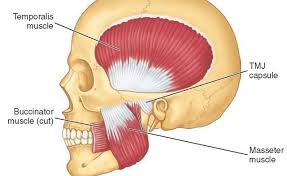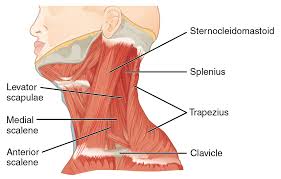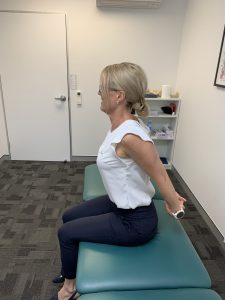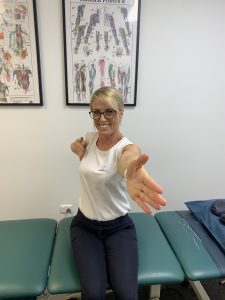If you’re a singer or professional voice user you will understand how important it is to warm up your vocal cords before you start practicing. There are also a large number of neck and fascial muscles that play an important role in a healthy voice. I’ve included picture in this guide. If you’d like a video demonstrating any of these exercise please scroll to the bottom of the post, where I’ve included a video demonstration.
Jaw Muscles

The masseters and Ptygoids are two muscles around the jaw and if these guys get tight, they affect your ability to open your mouth wide, protrude your jaw and move your jaw side to side. You can locate your masseters by placing your fingers just in front of your ear and sliding them down under your cheek bone. The ‘meaty’ muscles that runs from your cheek bone to your lower jaw (or mandible) is your masseter. You can feel your Ptygoids if you pop your thumb on the inside of your cheek and aim it up towards your cheek bone.
How do you keep these muscles relaxed and ready for training?
Gentle massage is a great way to release your masseters prior to singing or using your voice for long periods. Open your mouth and feel if there is any restriction. Starting at your tragus (your mid ear), slide your fingers down along your cheek bone until you feel a muscle. You can massage in either circular motions or glide your fingers from your cheek bone down towards your mandible. Do this for 1-2 minutes. After you’ve finished try opening your mouth again. It should be easier! Make sure you do both sides!
Neck Muscles

There are a lot of neck muscles that can pull on your face, jaw and skull and therefore compress your vocal cords and affect your ability to lift your head and open your mouth. The upper Trapezius, scalenes, sternocleidomastoid and levator scapulae are the main culprits here. Try the stretches below to loosen these guys up. Each stretch needs to be held for 60 seconds to get relaxation of those muscles.

Sternocleidomastoid stretch. Tilt your head to the side, rotate your chin away from that shoulder then extend your head backwards. You should feel a gentle stretch from your collar bone, up to the base of your chin.

Levator scapulae stretch. Look into your opposite arm pit and use your hand on the top of your head to gently intensify the stretch.

Massage to your sternocleidomastoid (SCM) muscle. If you feel like your SCM muscle is still tight, despite the stretch, you can release it using gentle massage. This muscle runs from the back of your jaw, diagonally towards where your collar bone inserts at the front of your chest. Use your thumb and index finger to grip this muscle and gently squeeze it on any tender points. Hold for 10-20sec, then release. Then move down the muscle slightly until you find another tender spot and repeat. Repeat 3-4 times down the length of the muscle. You only need very gentle pressure for this one!

Upper Trapezius stretch. Tilt your ear towards your shoulder to stretch the muscles down the side of your neck. You can use your hand on the top of your head to gently intensify this stretch.
Chest and upper back muscles
The breath and breathing control is an extremely important part of projecting your voice and maintaining voice health. The are lots of muscles like your intercostals (the muscles between your ribs that assist you to breath), pecs and your scalenes that will prevent you from taking a deep breath if they are tight. Try these exercises as part of your warm up to keep your upper back and rib cage moving freely.

Chest stretch. Clasp your hands behind your back and gently push your chest outwards. If you are flexible enough you can gently raise your hands towards the roof for a deeper stretch.

Bow and arrow. This is a great active stretch for restoring movement in the upper back and freeing up a lot of muscles at once. Start with both arms straight and hands together in front of you (at shoulder height). Take a deep breath in as you bend one elbow and rotate your upper body to the same side. Breathe out as you return to the start position. Repeat to the other side.
A healthy musculo-skeletal system is an important part of your voice practice. Incorporate 5 minutes of these stretches into your training routine and you will notice a difference in your voice, as well as prevent any neck and jaw issues in the future! If you have any questions with regards to these stretches or jaw and neck physiotherapy for singers and professional voice users please don’t hesitate to contact me on reception@physionorth.com.au, on 47240768 or via our social channels.
Jaquelin Goldsack
Physiotherapist
